- African Violet plants have leaves which grow outwards from the center stalk in a layered radial/circular pattern.
- African Violets grow as a single crown (thick stem) plant, in a rosette shape.
- The African Violet plant has a main stem/stalk and internodes which are short in size.
- To learn more about rosette and trailing violets can read, “What are the Different Types of African Violet Plants?“.
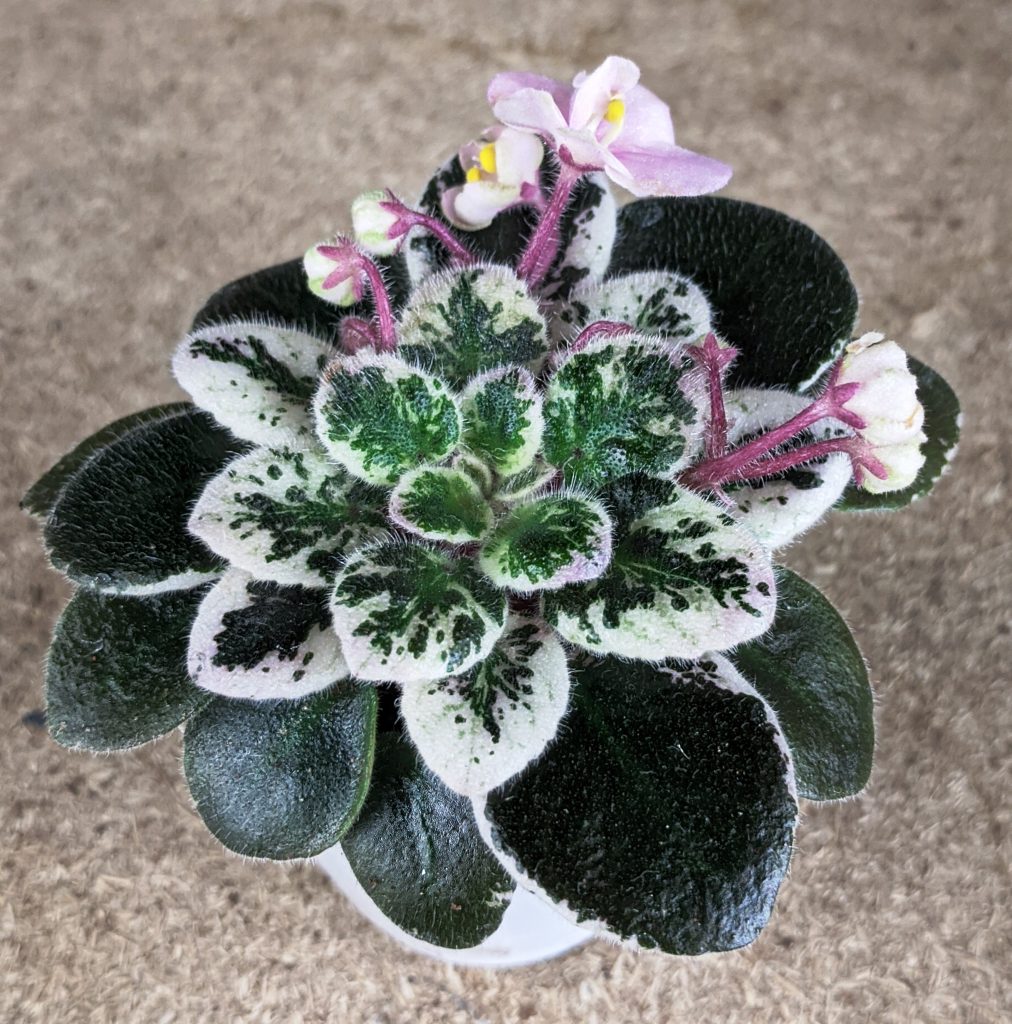
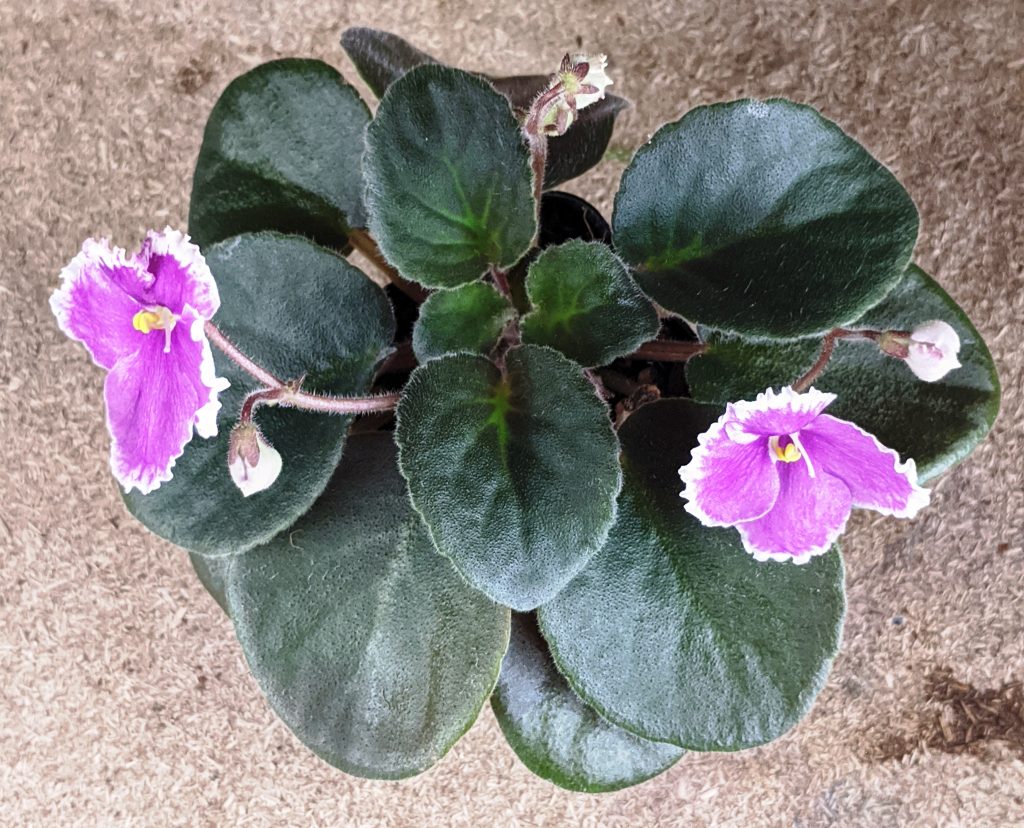
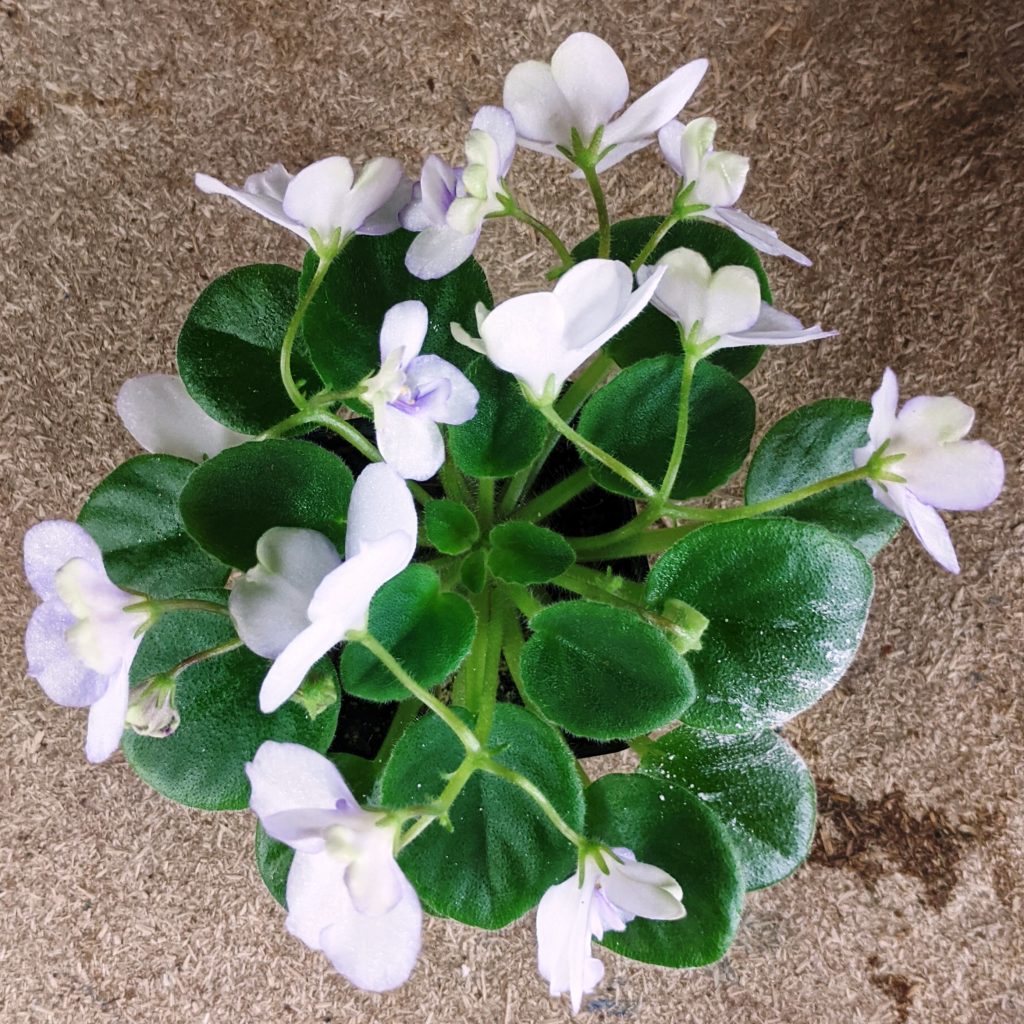
- The leaves of the African Violet plant grow flat and closer to the soil surface.
- The leaves will start growing from the crown and then form layers of leaves around the crown in a circular pattern.
- These leaves, grow in sets of 3 to form the rosette /circular pattern.
- A single rosette African Violet plant can have as man as five symmetrical whorls of leaves tightly clustered at the base of the plant.
- The blooms grow within the center of the African Violet plant.
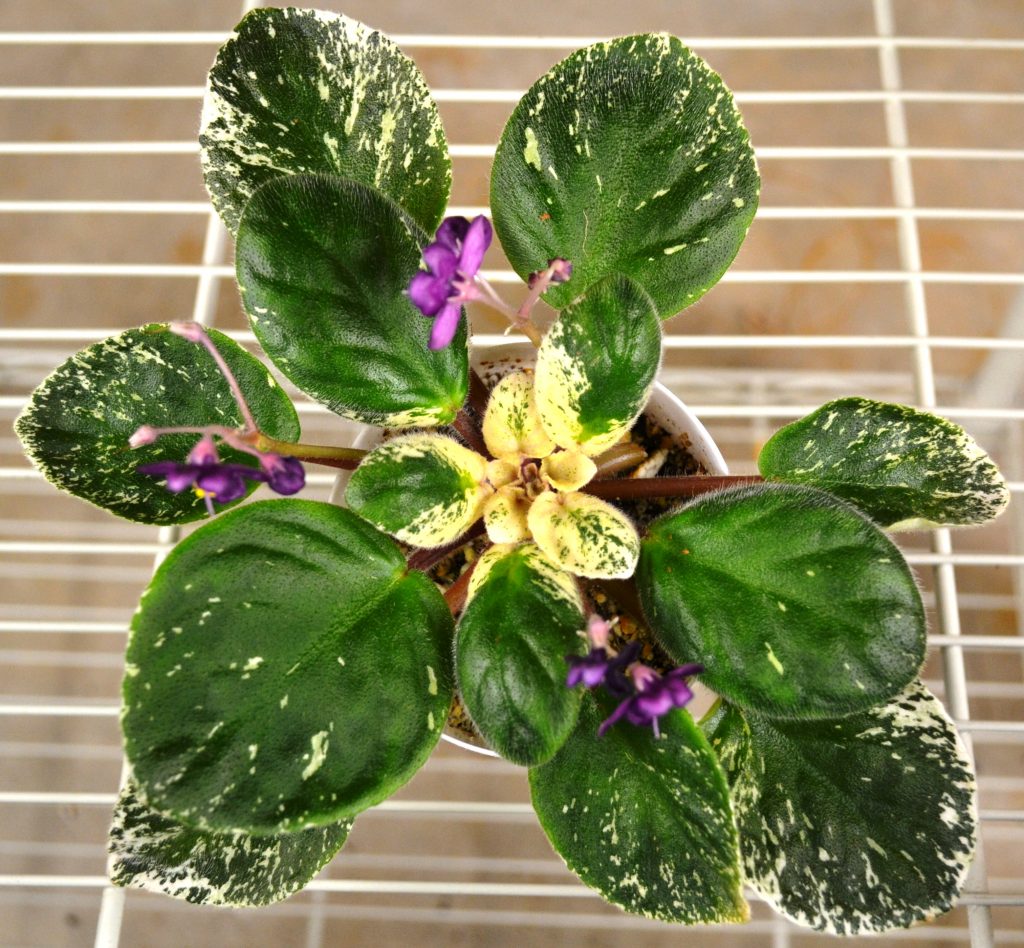
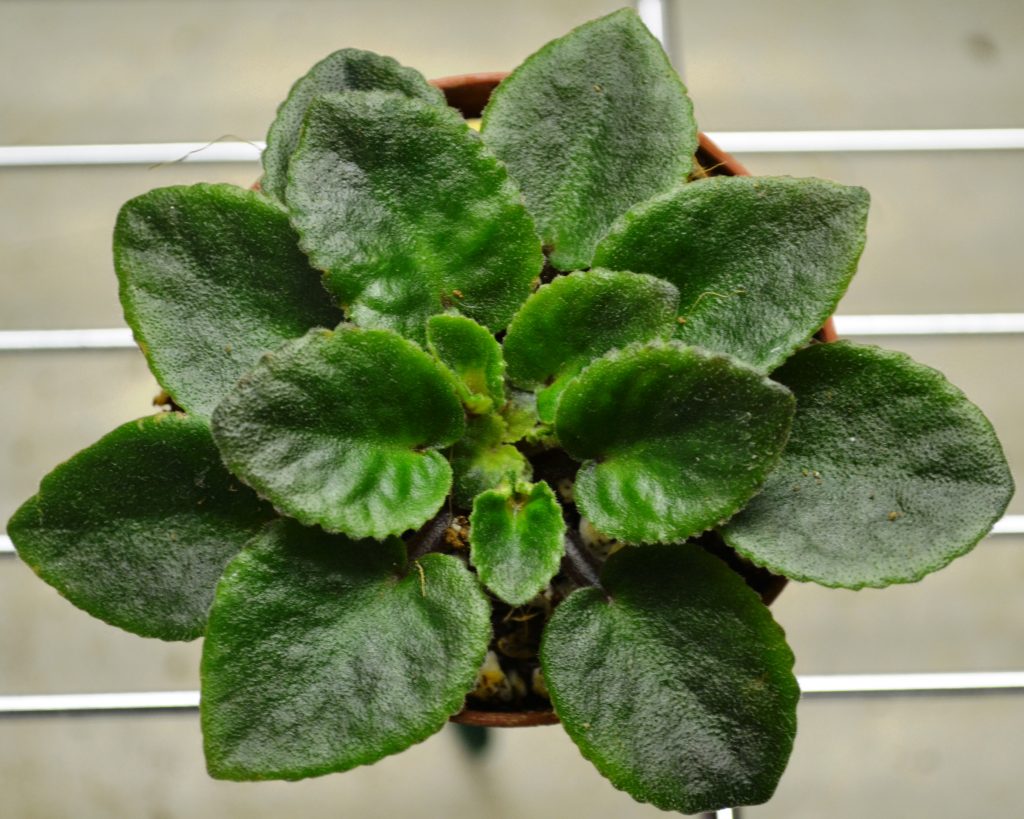
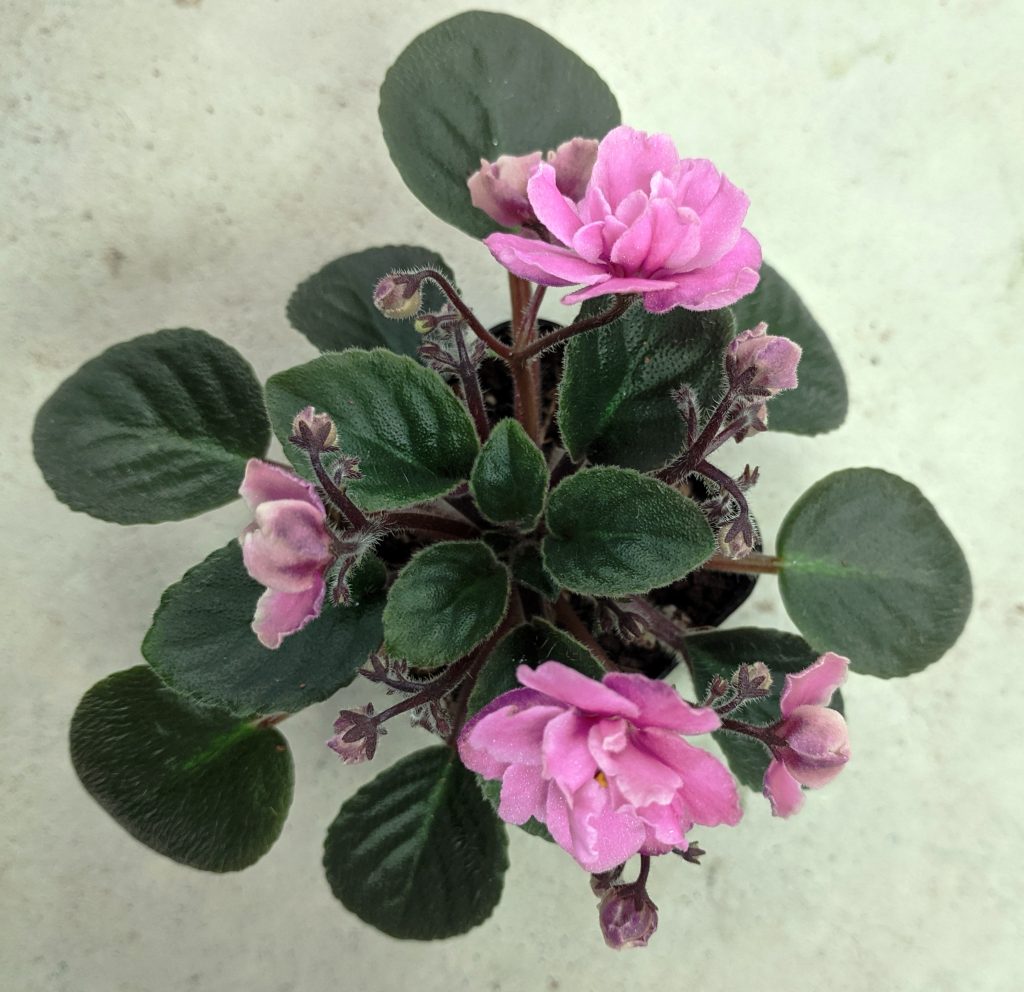
Crown and Leaf Rows Of The African Violet Plant:
- African Violet plants, can have 1-6 rows of symmetrical whorls of leaves.
- The center set of leaves are known as the crown.
- Below are pictures identifying the crown of the African Violet plant.

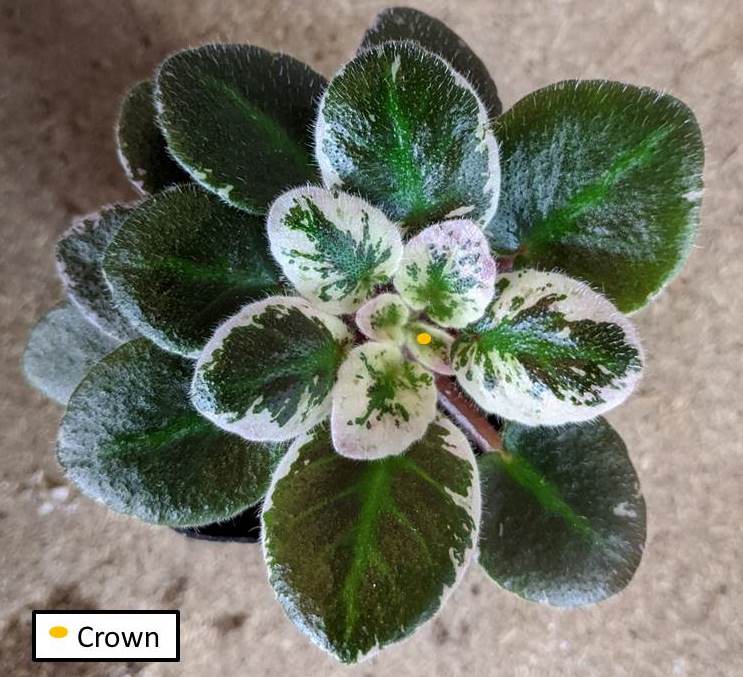
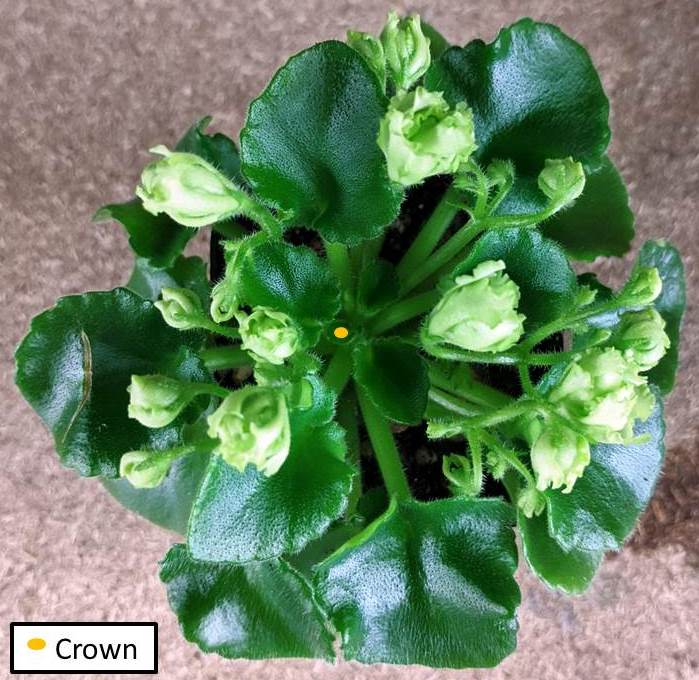
- Below are pictures identifying the first row of leaves on African Violet plants.
- The first row is the set of the first 3 leaves right outside of the crown.
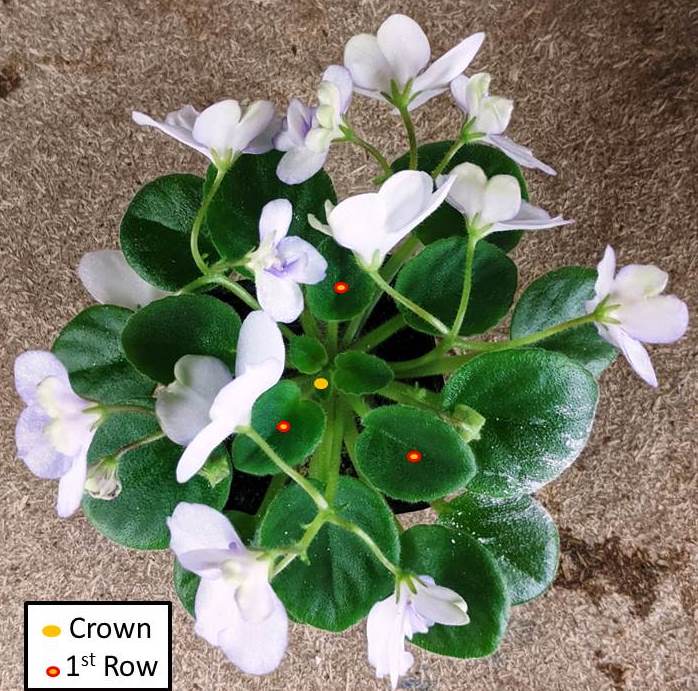
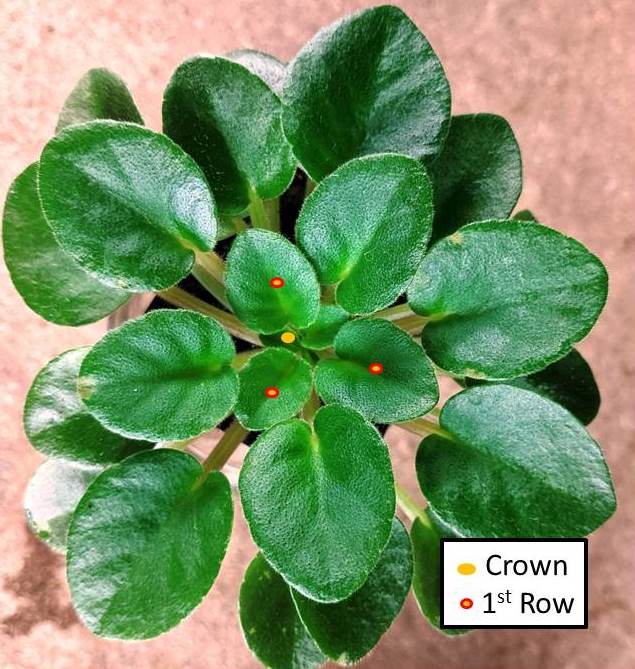
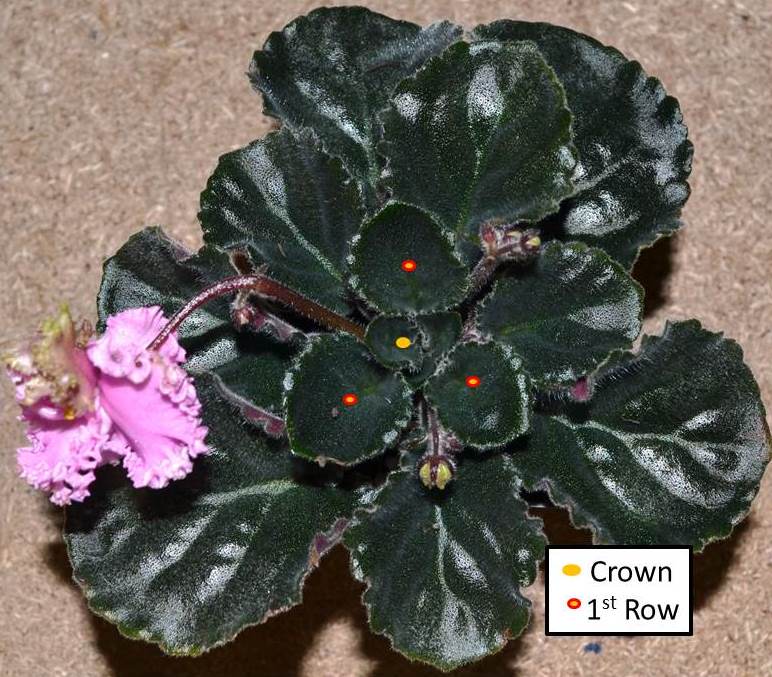
- Below are pictures identifying the second row of leaves on African Violet plants.
- As the African Violet plant grows and matures, it starts to grow more rows of leaves from the crown.
- Once the first row of leaves matures, they are pushed outwards and they now become the 2nd row of leaves.
- As the crown leaves matures, they are pushed outwards and become the 1st row of leaves.
- A new crown then starts to grow.
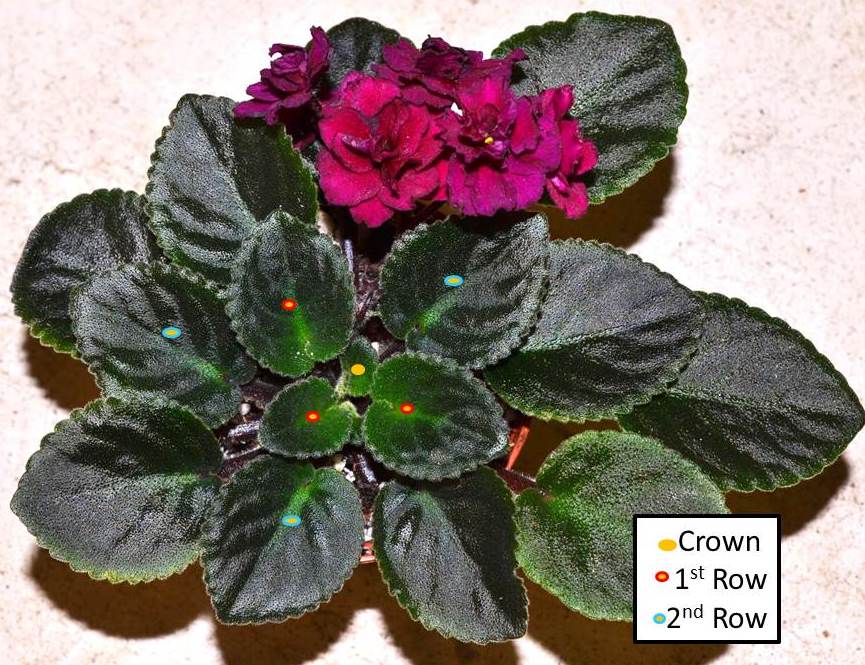
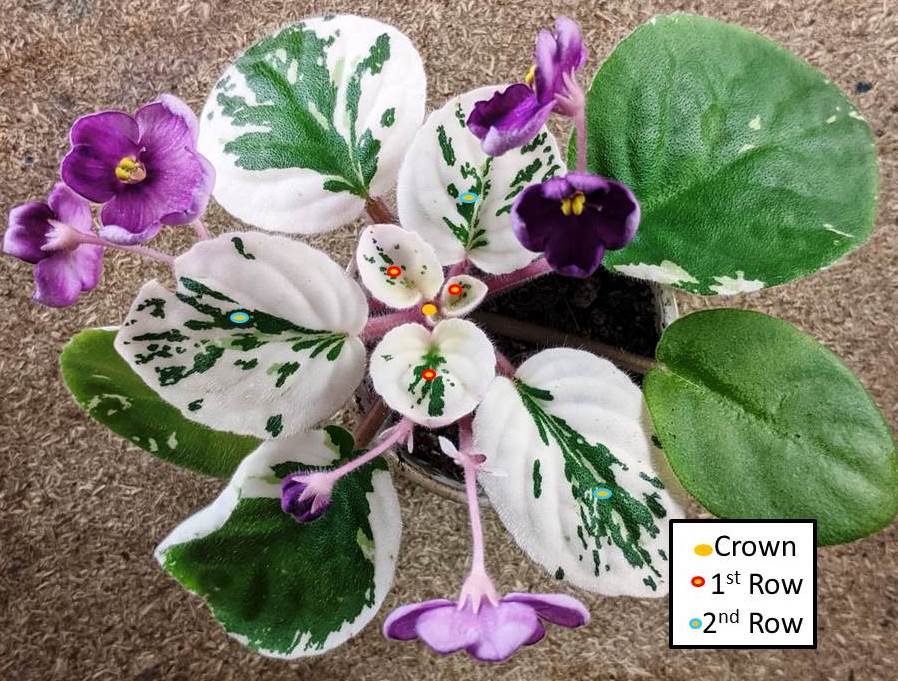

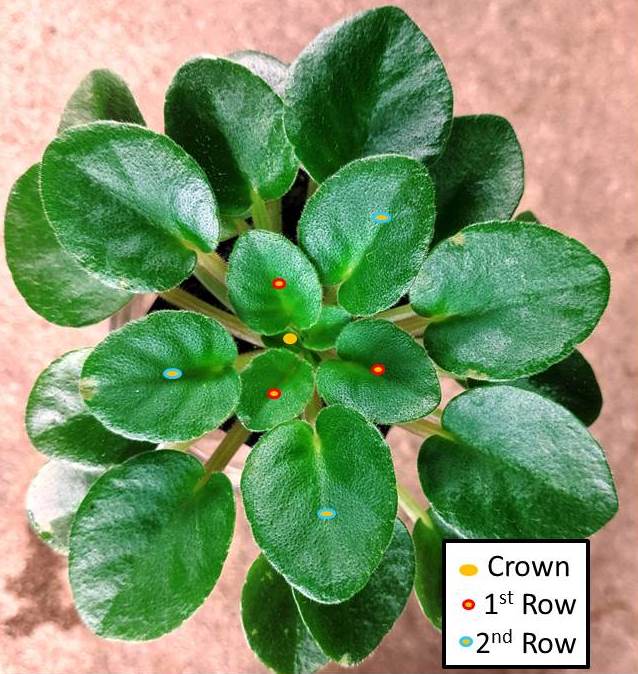
- Below are pictures identifying the third row of leaves on African Violet plants.
- As the African Violet plant continues to grow, it pushes out more and more sets of 3 leaves outwards.
- This increases the diameter of the plant and the leaf span of the plant.



- Below are pictures identifying the fourth row of leaves on African Violet plants.
- Here we can see that the plant is busy at work putting out new sets of leaves.
- The crown has generated 4 rows of leaves.


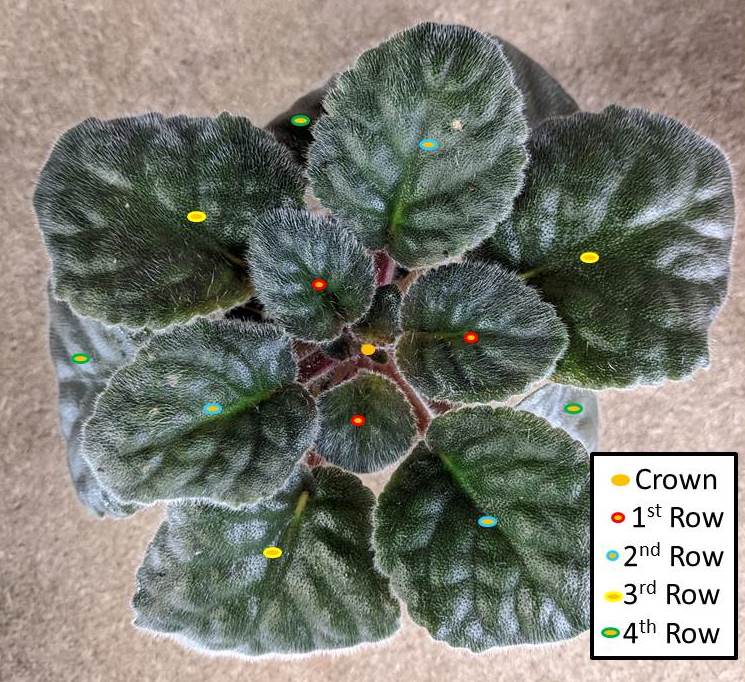
- Below are pictures identifying the fifth row of leaves on African Violet plants.
- As the African Violet plant grows, the 5th row of leaves which were once started from the crown, have now been pushed outwards and there are 4 new rows of leaves in the center.
- These 5th row of leaves are considered as the older leaves on the plant.
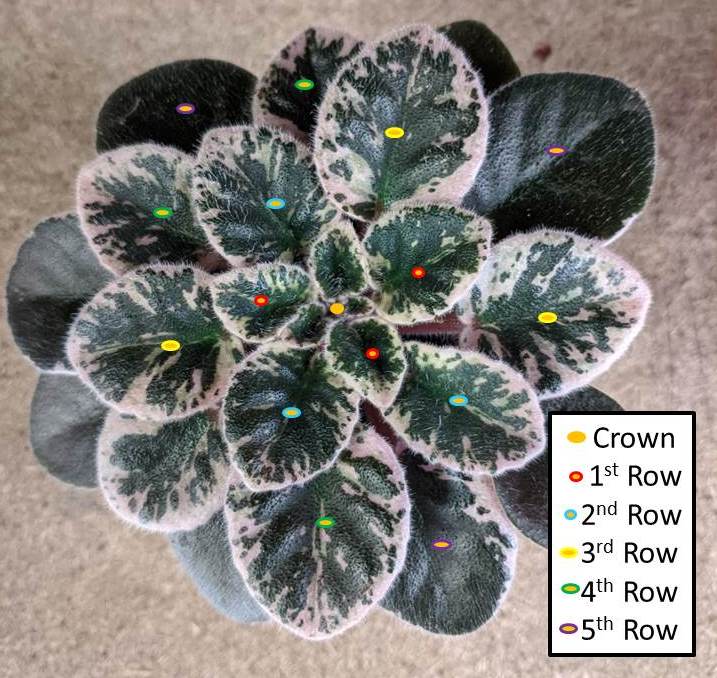
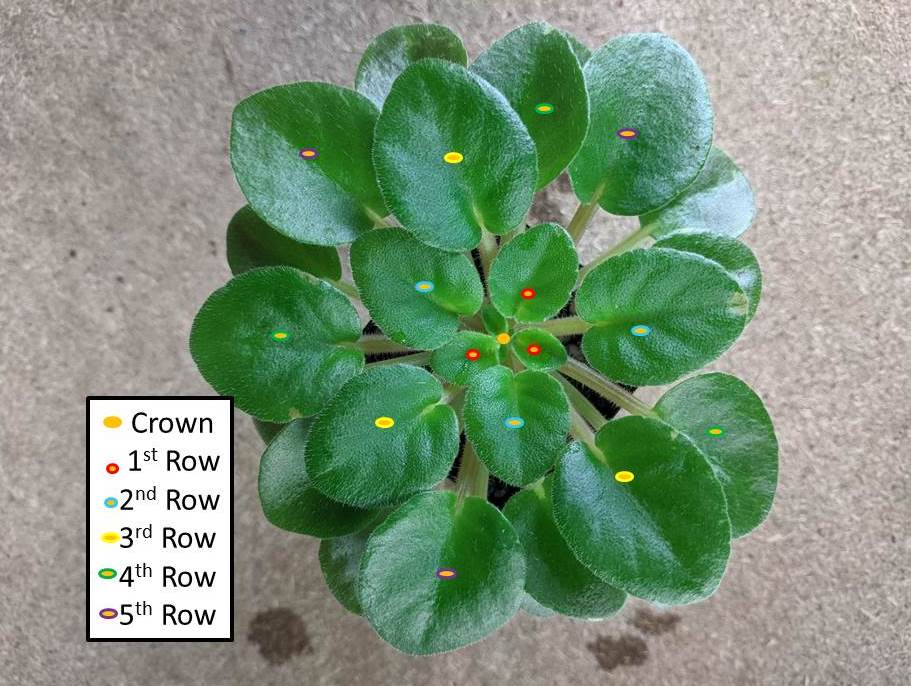
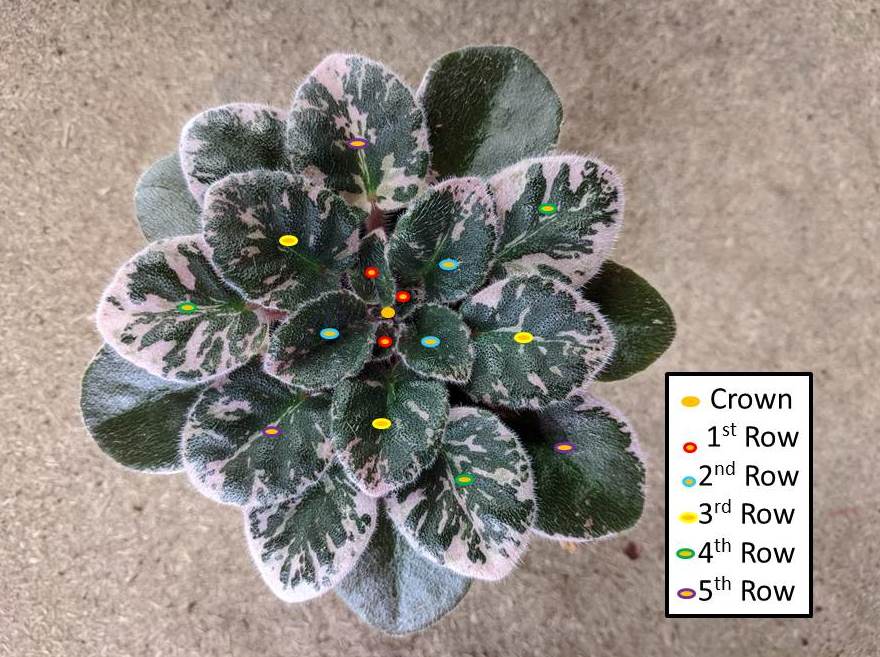
- Below are pictures identifying the sixth row of leaves on African Violet plants.
- An African Violet can maintain maximum 3-5 rows of leaves, depending upon whether they are miniature, semi-miniature or standard in size.
- Can learn more about African Violet plant sizes here, “What are the Different Sizes of African Violet Plants?“.
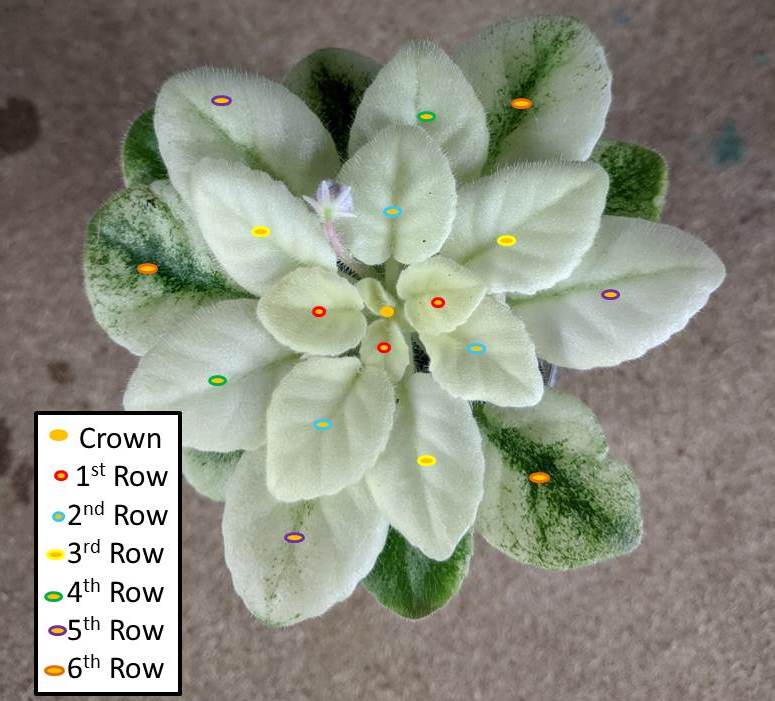
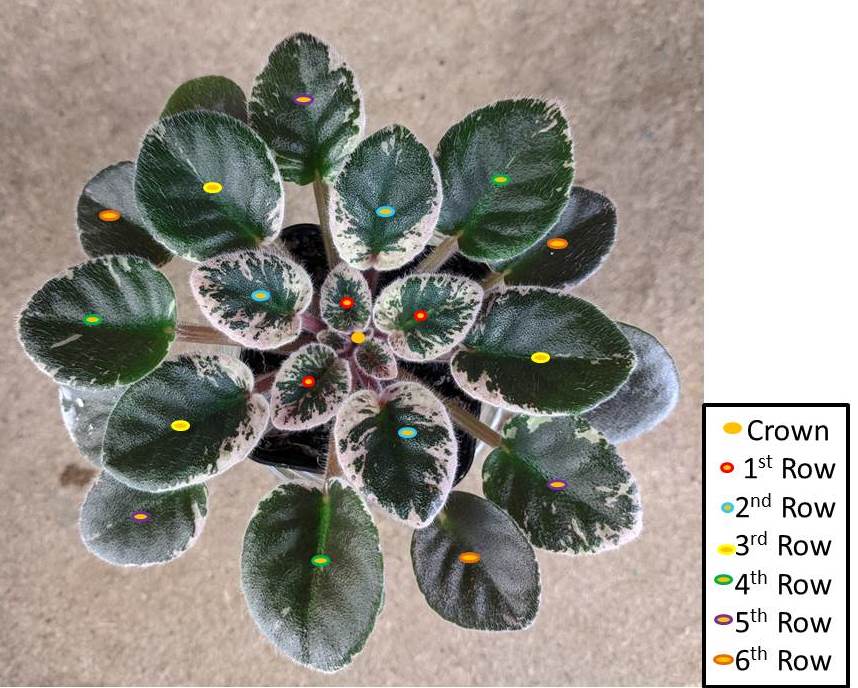
- The 6th row of leaves are much older and will soon need to be removed, to maintain a rosette swirl pattern.
- Over time, the 5th or 6th row of leaves, will become shriveled, limp or loose color.
- This is when you know its time to remove these older leaves and allow the crown to put out a new set of healthy leaves.
Examples of self watering pots for African Violet plants as shown below:



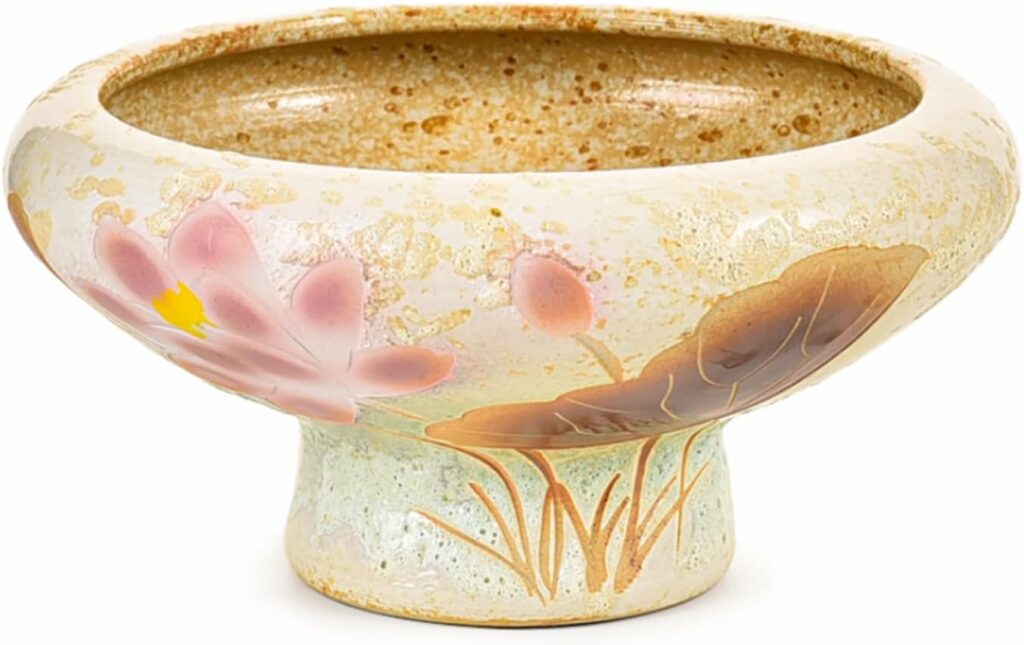
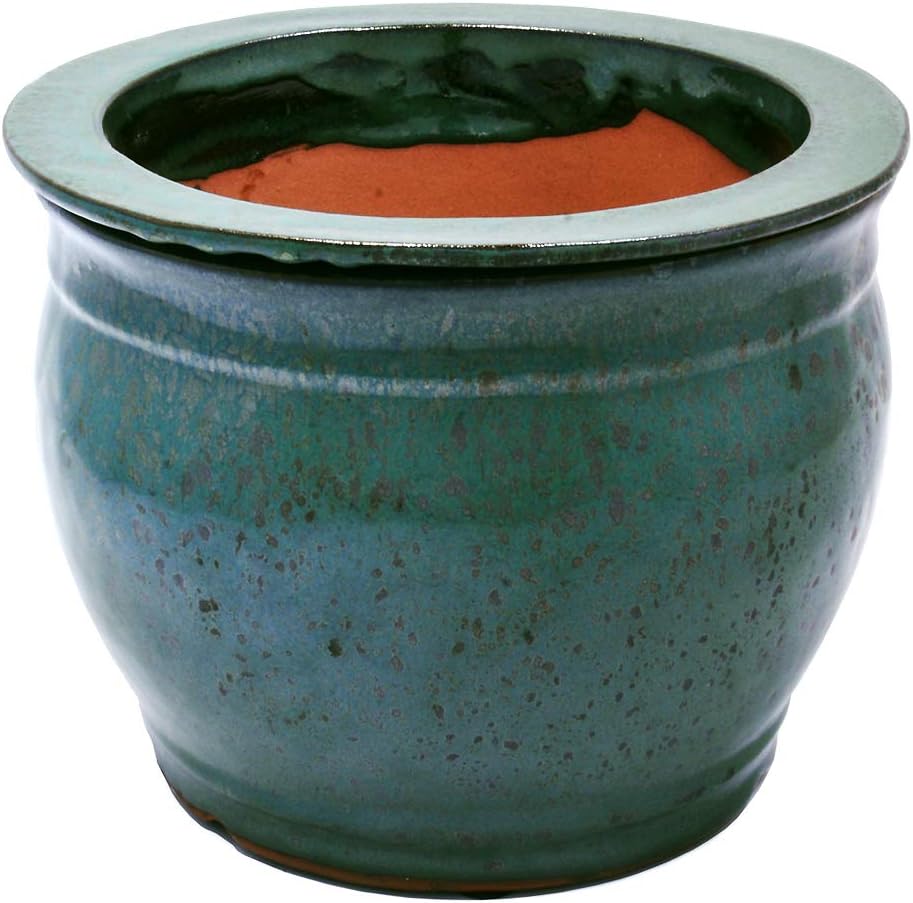
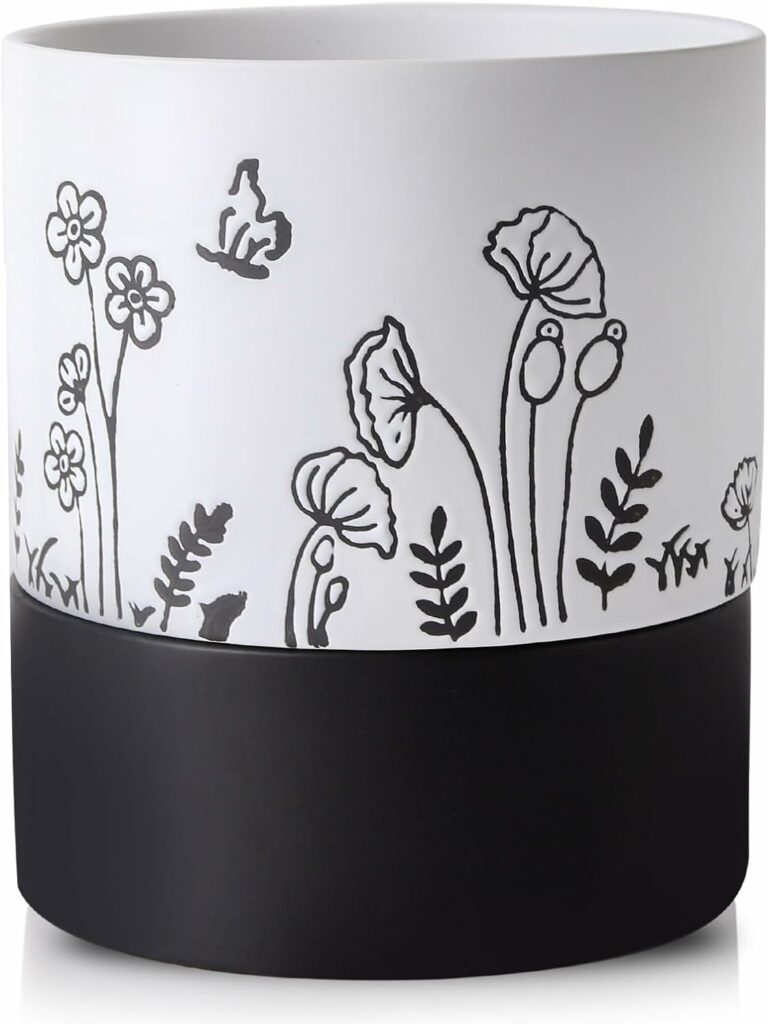
Happily stumbled onto your article, love the the way you wrote it. Thank you
Thank you Jujubee, appreciate it,
BV
A very good article on leaves,not found elsewhere.I am new to AVs and wanted to know when to remove old leaves.Thanks for your notes.
Hello, remove old leaves every 2-3 months on average. However, if the outer row seems crowded, the inner crown seems crowded too, the can start removing 3-4 leaves from the outer row. Also if the outer row leaves look dark brown, dull, limp, or faded color, you can remove them. regards, BV
Thank you for explaining this! Some of my violets look like me when I try to cut my own bangs. It didn’t click that they come in sets of 3.